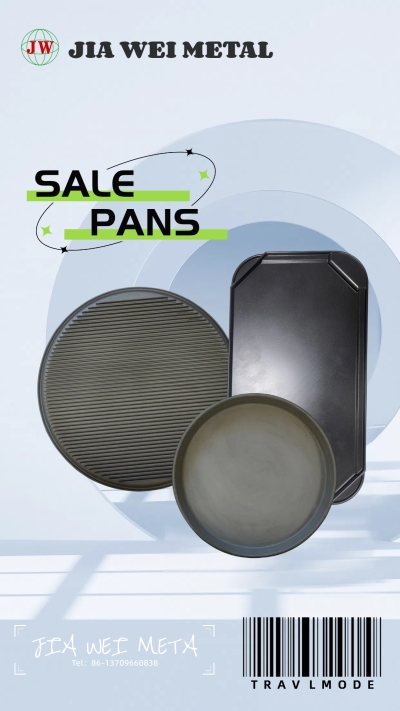
Die Casting Molds: The Backbone of Efficient Component Production
2025-05-19 15:30
In the dynamic landscape of modern manufacturing, die casting has emerged as a cornerstone process for producing high - quality metal components. At the heart of this process are die casting molds, which play a pivotal role in determining the precision, complexity, and efficiency of part production.
The Die Casting ProcessUnveiled
Die casting is a manufacturing method that involves injecting molten metal, typically aluminum, zinc, or magnesium alloys, into a precisely machined mold cavityunder high pressure. This high - pressure injection ensures that the molten metal fills even the most intricate details of the mold, resulting in components with tight tolerances and excellent surface finishes.
The process begins with the preparation of the die casting mold. These molds are usually made from high - strength steel alloys, such as H13 or SKD61, which can withstand the repeated thermal and mechanical stresses of the die - casting process. The mold consists of two main parts: the stationary half, which is mounted on the fixed platen of the die - casting machine, and the movable half, which contains the ejection system and is attached to the moving platen.
Once the mold is prepared, the molten metal is introduced into the mold cavity. In hot - chamber die casting, which is commonly used for low - melting - point alloys like zinc, the injection system is submerged in the molten metal bath. This allows for rapid and efficient injection, making it ideal for producing small - to - medium - sized parts with high precision. On the other hand, cold - chamber die castingis used for alloys with higher melting points, such as aluminum and magnesium. In this process, the molten metal is poured into a separate chamber before being injected into the mold cavity under high pressure. This method provides better control over the temperature and quality of the molten metal, resulting in higher - quality parts.
After the molten metal is injected into the mold, it cools and solidifies rapidly. The cooling time is carefully controlled to ensure that the part achieves the desired mechanical properties. Once the part is solidified, the mold opens, and the ejection system pushes the part out of the mold cavity. The part may then undergo further post - processing steps, such as trimming, machining, and surface finishing, to meet the final product requirements.
The Design and Development of Die Casting Molds
The design of die casting molds is a complex and highly specialized process that requires a deep understanding of both the die - casting process and the part to be produced. The mold design must take into account factors such as the part's geometry, dimensions, surface finish requirements, and the material to be used.
Computer - Aided Design (CAD) and Computer - Aided Engineering (CAE) technologies have revolutionized the . CAD software allows designers to create detailed 3D models of the mold, while CAE software is used to simulate the die - casting process. By running simulations, designers can predict potential issues such as porosity, shrinkage, and uneven filling of the mold cavity. This enables them to make design modifications before the mold is actually manufactured, reducing the risk of costly errors and improving the overall quality of the mold.
One of the key challenges in die - casting mold design is ensuring proper venting and gating. Venting is essential to allow air and gases to escape from the mold cavity during the injection process. If air is trapped in the cavity, it can cause defects such as porosity and blisters in the final part. Gating, on the other hand, refers to the system of channels through which the molten metal enters the mold cavity. The design of the gating system must ensure that the molten metal flows evenly and smoothly into the cavity, without causing turbulence or jetting.
Another important aspect of die - casting mold design is the use of cores and inserts. Cores are used to create internal cavities or features in the part, while inserts are used to add specific details or functionality. These components can be made from a variety of materials, depending on the requirements of the part. For example, some cores may be made from a heat - resistant alloy to withstand the high temperatures of the molten metal, while others may be made from a more flexible material to allow for easier removal from the part.
The Role of Die Casting Molds in Different Industries
Die casting molds are used in a wide range of industries, each with its own unique requirements and applications.
In the automotive industry, die casting is used to produce a vast number of components, from engine blocks and transmission housings to suspension parts and interior trim. The ability of die casting to produce complex, high - strength parts with tight tolerances makes it an ideal choice for automotive applications. For example, aluminum die-cast engine blocks are lighter than their cast - iron counterparts, which helps to improve fuel efficiency and reduce emissions. In the era of electric vehicles, die - cast battery enclosures and motor housings are also becoming increasingly important, as they need to provide both mechanical protection and thermal management.
The aerospace industry also relies heavily on die - casting technology. Magnesium die - castings, in particular, are highly valued in aerospace due to their excellent strength - to - weight ratio. These components can withstand the extreme conditions of flight while minimizing the weight of the aircraft, which is crucial for fuel efficiency and performance. Die - cast parts are used in everything from aircraft engine components to structural elements and interior fittings.
Consumer electronics is another industry where die casting molds play a significant role. Zinc die - castings are commonly used to produce the frames and housings of smartphones, tablets, and laptops. The ability to create small, detailed parts with excellent surface finishes makes die casting ideal for these applications. In addition, die - cast components can provide good electromagnetic shielding, which is important for protecting the sensitive electronic components inside these devices.
Innovations in Die Casting Mold Technology
The die - casting industry is constantly evolving, driven by the need for higher efficiency, better quality, and more sustainable production methods. One of the most significant innovations in recent years has been the development of vacuum die - casting technology. In traditional die - casting, air can become trapped in the mold cavity, leading to defects in the final part. Vacuum die - casting addresses this issue by evacuating the air from the mold cavity before the molten metal is injected. This results in parts with fewer internal voids, improved mechanical properties, and better surface finishes.
Another area of innovation is the integration of Industry 4.0 technologies into die - casting processes. Internet of Things (IoT) sensors can be installed on die - casting machines and molds to monitor real - time data such as temperature, pressure, and machine performance. This data can then be analyzed using artificial intelligence (AI) algorithms to optimize the die - casting process, predict maintenance needs, and reduce downtime. For example, AI can be used to adjust the injection speed and pressure based on the real - time conditions of the mold and the molten metal, resulting in more consistent part quality.
Sustainability is also a major focus in the die-casting industry. Manufacturers are increasingly looking for ways to reduce energy consumption and waste in the die - casting process. One approach is to use more energy - efficient melting furnaces and die - casting machines. Another is to recycle scrap metal generated during the die - casting process. By reusing this material, manufacturers can reduce their reliance on virgin materials and lower their environmental impact.
In conclusion, die casting molds are an integral part of the modern manufacturing ecosystem. Their ability to produce high - precision, complex - shaped components efficiently makes them essential for a wide range of industries. As technology continues to advance, we can expect to see even more innovative die - casting mold designs and processes, enabling manufacturers to meet the ever - evolving demands of the market while also addressing environmental and sustainability concerns
Get the latest price? We'll respond as soon as possible(within 12 hours)












